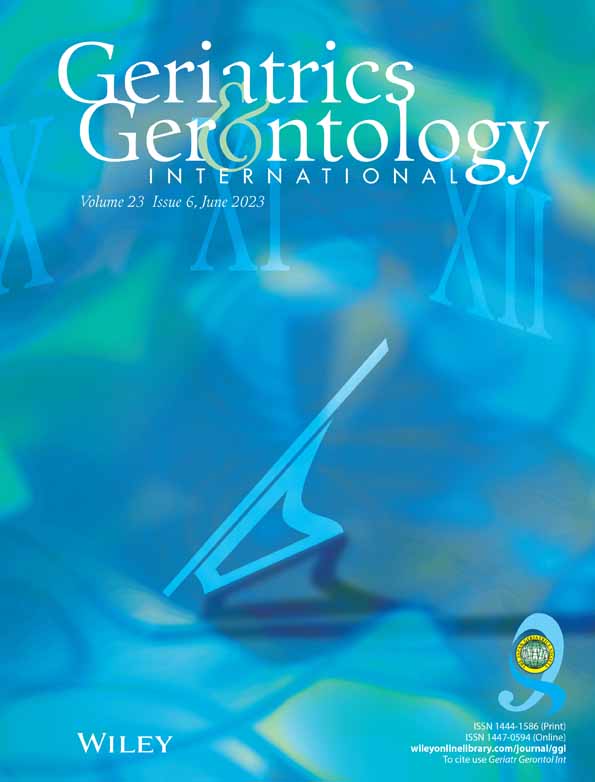Factors associated with frailty transitions among the old-old in a community
Abstract
Aim
The study aimed to explore the factors associated with frailty transitions among the old-old (aged ≥75 years) in a community.
Methods
The participants were all from a prospective cohort study in a community in Beijing, China. Frailty states were assessed using FRAIL at baseline and at 1-year follow-up. The association between factors, including comprehensive geriatric assessment and laboratory indicators, and frailty transitions were explored by binary logistic regression. The predicted value of the factors associated with frailty transitions was analyzed using the receiver operating characteristic curve (ROC) and the area under the ROC (AUC) for each factor was calculated.
Results
In total, 183 older adults (mean age: 83.9 ± 4.4 years; women, 59%) completed the frailty state assessment at baseline and 1-year follow-up. After adjusting for age and sex, physical function, including walking speed, timed up-and-go test and short physical performance battery, serum albumin and serum high-sensitivity C-reactive protein (hsCRP) were associated with worsening of the frailty state. Cognitive function was associated with improving the frailty state. ROC analysis showed that low walking speed (AUC: 0.81), long timed up-and-go test time (AUC: 0.77), low short physical performance battery score (AUC: 0.75), low serum albumin (AUC: 0.68) and high serum hsCRP (AUC: 0.80) could predict the decline in frailty state. Good cognitive function (AUC: 0.69) predicted an improvement in the frailty state.
Conclusions
The frailty state of the old-old with poor physical function, low serum albumin and high serum hsCRP was likely to decline, but it could improve with good cognitive function. Geriatr Gerontol Int 2023; 23: 405–410.
Open Research
Data Availability Statement
The datasets used and analyzed during the current study are available from the corresponding author on reasonable request.




